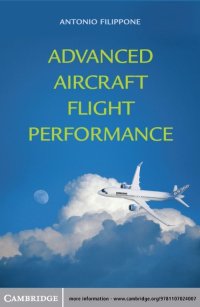"This book deals with aircraft flight performance. It focuses on commercial aircraft but also considers examples of high-performance military aircraft. The framework is a multidisciplinary engineering analysis, fully supported by flight simulation, with software validation at several levels. The book covers topics such as geometrical configurations, configuration aerodynamics and determination of aerodynamic
derivatives, weight engineering, propulsion systems (gas turbine engines and propellers), aircraft trim, flight envelopes, mission analysis, trajectory optimization, aircraft noise, noise trajectories, and analysis of environmental performance. A unique feature of this book is the discussion and analysis of the environmental performance of the aircraft, focusing on topics such as aircraft noise and carbon dioxide emissions"--"Prolegomena Commercial aviation has grown to become the backbone of the modern transport system. Demand for commercial air travel has grown exponentially since the 1960s. The expansion of the aviation services is set to increase further. Even in the worst moments of recession, air transport has only suffered a blip in its expansion. Our economy has become so dependent on air transport that any inconvenience caused by weather and external factors can cause mayhem. To understand the size of commercial aviation, reflect upon the fact that by the year 2000, there have been 35.14 million commercial departures worldwide, for a total of 18.14 million flight hours1. In some countries, air transport accounts for 1/4 of all transported goods by value. It is estimated that there are about 50,000 airports and airfields around the world2 and 18,000 commercial airplanes flying everyday. A number of large airports are being constructed in some rapidly expanding regions. Modern airports are the size of a city: London Heathrow covers about 12 km2; this is an area large enough to park about 1,800 Airbus A380 nose-to-tail. The support required by the aircraft is extraordinary, and involves engineering, logistics, integrated transport systems, security systems, energy and people. However, at the heart of everything is the aircraft itself, interpreted as a flight system: this is the subject of our book"--
Read more... 